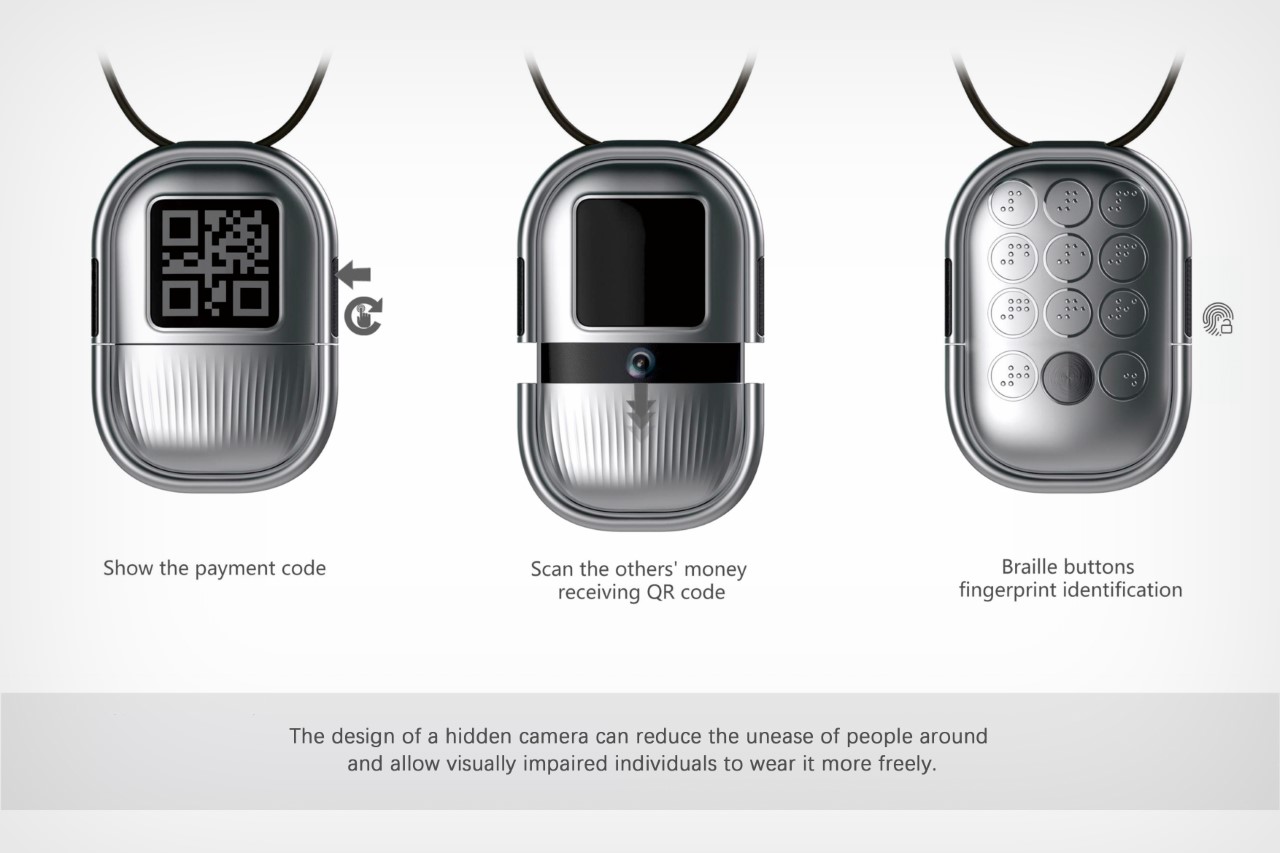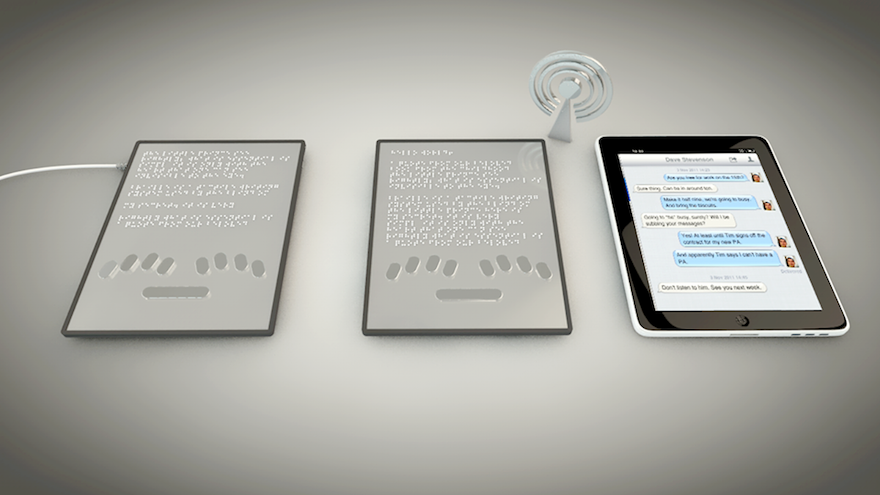Assistive Technology for the Blind: Innovations to Transform Lives
Assistive Technology for the Blind: Innovations to Transform Lives
Blog Article
Empowering Self-reliance With Assistive Modern Technology for the Blind
The combination of assistive modern technology right into the lives of individuals with visual problems stands for a significant development in promoting self-reliance and self-sufficiency. From ingenious display visitors to advanced clever walking canes, these tools not only improve daily navigating and communication however likewise empower users to engage meaningfully in numerous aspects of life. As we discover the myriad benefits and real-world applications of these modern technologies, it comes to be important to examine the underlying variables that add to their effectiveness and the capacity for future developments in this essential area.
Introduction of Assistive Technology

The growth of assistive innovation is based in principles of inclusivity and empowerment. Innovations in software, equipment, and sensory improvements offer individuals with alternatives customized to their certain needs. From display visitors that convert message to speech, to tactile tools that convey details with touch, these devices change the method individuals involve with their surroundings.
Along with sensible applications, assistive technology fosters better social inclusion and involvement in numerous markets, including education and work (Assistive technology for the blind). As r & d remain to evolve, the potential for assistive modern technology to even more enhance the lives of aesthetically damaged individuals stays appealing, leading the method for an extra equitable culture where every person can thrive
Sorts Of Assistive Tools
A variety of assistive devices have actually arised to sustain individuals with aesthetic disabilities, each designed to satisfy certain requirements and boost day-to-day performance. These gadgets vary from low-tech remedies to high-tech innovations, offering diverse choices for users.
Low-tech tools consist of magnifiers and large-print materials that assist in analysis and writing. Braille devices, such as Braille stylus pens and slates, enable responsive analysis and interaction. Orientation and movement help, like white walking canes, help customers browse their atmosphere securely.
On the greater end of the spectrum, digital magnifying systems and display visitors use substantial support. Electronic magnifiers allow users to expand text and photos on displays, while display visitors transform electronic web content into synthesized speech, promoting access to information on computers and smart devices.
Smartphone applications also play a vital function, providing features like text recognition and navigating aid. Wearable innovation, such as wise glasses geared up with increased truth, is becoming an encouraging device to boost situational recognition.
Advantages of Assistive Technology
The combination of assistive technology substantially improves the lifestyle for people with aesthetic impairments. These modern technologies equip individuals by promoting independence, allowing them to browse their environments better and carry out everyday tasks with greater simplicity. As an example, screen viewers and magnification software enable people to accessibility electronic information, fostering academic and specialist chances that may have formerly run out reach.
Furthermore, assistive devices such as clever walking canes and GPS applications give real-time Related Site navigating support, enhancing flexibility and safety. This raised freedom not only boosts self-worth but also motivates social interaction, allowing users to participate even more totally in their areas.
Assistive modern technology additionally promotes interaction, assisting users get in touch with others via voice recognition and text-to-speech applications. This capacity is vital for preserving relationships and accessing essential information.
In addition, the modification choices available with lots of assistive innovations guarantee that customers can customize devices to their certain requirements, even more enhancing usability and effectiveness. In general, the advantages of assistive technology for people with aesthetic disabilities are extensive, promoting a more inclusive culture where everybody can seek their objectives and goals.
Study and Success Stories
Highlighting the transformative influence of assistive modern technology, numerous situation studies highlight exactly how individuals with visual problems have actually effectively incorporated these devices into their lives. One engaging example involves an university student that made use of display reading software program to browse scholastic products and on the internet resources efficiently. This technology not just facilitated her find more information education however also enhanced her confidence in joining conversations and group tasks.
Another situation study features an expert that employs a smart device application designed for navigating and things recognition. By utilizing this app, he has reclaimed freedom in both his individual and work settings, enabling him to commute separately and engage with associates better.
In addition, a retired person shared her experience with braille e-readers, which allowed her to access a substantial variety of literature and stay attached with her community with book clubs.
These success stories emphasize the vital duty of assistive innovation in cultivating self-reliance, improving lifestyle, and promoting social combination for individuals with aesthetic impairments (Smart glasses for the visually impaired). By accepting these ingenious tools, customers can get rid of difficulties and take opportunities that add to their individual and expert satisfaction

Future Fads in Assistive Technology
Development in assistive innovation is positioned to redefine the landscape of support for individuals with visual problems. Emerging trends emphasize the assimilation of expert system (AI) and machine knowing, which enhance the capability of gadgets that help with navigation and details ease of access. As an example, AI-driven applications are now efficient in interpreting aesthetic information in real-time, making it possible for customers to engage with their setting more separately.
Furthermore, the advancement of wearable innovation is advancing quickly. Smart glasses equipped with enhanced fact (AR) can give audio summaries of environments, changing exactly how customers communicate with public areas. These tools not only promote freedom but additionally foster social inclusion.
Additionally, the Net of Points (IoT) is making homes smarter, allowing for seamless connection between day-to-day appliances and assistive devices. This connection empowers individuals by making it possible for voice-activated controls and computerized responses customized to specific requirements.
Conclusion
To conclude, assistive technology plays an essential function in empowering individuals with visual disabilities by boosting their freedom and interaction with their environments. The diverse variety of devices and applications available not just facilitates navigating and interaction however also promotes social integration and possibilities for personal and specialist growth. As innovations proceed in this field, the potential for enhancing the lifestyle for those with aesthetic disabilities will expand, fostering better autonomy and empowerment.

Report this page